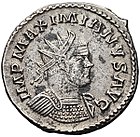Charge card
Acharge cardis a type ofcredit cardthat enables the cardholder to make purchases which are paid for by the card issuer, to whom the cardholder becomes indebted. The cardholder is obligated to repay thedebtto the card issuer in full by the due date, usually on a monthly basis, or be subject to late fees and restrictions on further card use. Charge cards are distinct from traditionalcredit cards,which arerevolving creditinstruments that do not need to be paid in full every month and a balance may be carried over, on which interest is paid. Charge cards are typically issued without spending limits, whereas credit cards usually have a specified credit limit that the cardholder may not exceed. Most charge cards are held by businesses, corporations or executives thereof, and are issued to customers with a good or excellentcredit score.
History
[edit]In 1914,Western Unionopened the first charge account for its customers and provided them with a paperidentification.[1][2]There were many larger department stores which opened store charge accounts for their customers with paper identification, enabling the customer to make purchases on credit provided by the store. However, these accounts could be used only within the store which issued them.
In 1950,Diners Clubbegan opening charge accounts with paper identification cards, directed at the travel and entertainment markets. The novel feature of these cards was that the charge card could be used in a large number of stores. These stores had to enter an agreement with Diners Club, and pay a fee to the company. For the fee, Diners Club carried the cost of setting up accounts, authorizing each transaction, processing transactions and collections, bore the financing costs and assumed the risk of cardholders defaulting. The new system was especially appealing to smaller stores in competition with the larger stores but who could not justify setting up their own charge account facilities. Eventually the larger stores began accepting these cards, testifying that the fees charged by the card operator were lower than the store's cost in running their own store accounts. In 1957,American Expressalso entered the field, and in 1959 was the first company to issue embossedplasticcharge cards toISO/IEC 7810standards.
In Europe, theMasterCard-affiliatedMaestrobrand[3](which is adebit cardrather than a charge card) replaced the EuropeanEurochequebrand for payment cards in 2002. Many Eurocheque cards, particularly in such countries asAustriaandGermany,were charge cards branded with the Eurocheque logo. In addition, the EuropeanEurocard,issued as the competitor for American Express was, and in some countries (such as theNordic countries) still is, a charge card.[citation needed]Therefore, the majority of MasterCards in these countries still are charge cards.Visacharge cards are also available in Europe.
Operation
[edit]The user of the charge card has to pay their account balance at the end of each month and the charge card company, unlike a credit card, does not charge interest. A charge card company's main source of revenue is themerchant fee,which is a percentage of thetransactionvalue which typically ranges between 1 and 4%, plus aninterchangeor minimum fee.
Many charge cards have the option for users to pay for some purchases over time.American Expresscharge card customers, for instance, can enroll in the Extended Payment Option (internally referred to as ExPO) to be able to pay for purchases over $200 over time,[4]or in Sign & Travel to be able to pay for eligible travel-related expenses over time.[5]
Most charge cards also have a feature called No Preset Spending Limit (NPSL).[6]While consumers often take NPSL to mean that their cards are without limits, NPSL really means that a card's limit changes, often from month-to-month, based on factors such as consumer charging and payment history as well overalleconomic trends.According to aWalletHub.comNPSL study, the way NPSL charge cards are reported to the major credit bureaus varies by issuer and can lead to artificial increases in credit utilization, thereby lowering one'sFICO Score.[7]
Governmentsand largebusinessesoften use charge cards to pay for and keep track of expenses related to official business;[8]these are often referred to aspurchasing cards.Many retailers and banks issue charge cards to customers. Some American Express andDiners Clubcards are charge cards, rather thancreditordebitcards such asVISAandMasterCard.TheCouttsSilk Charge Card and theCenturion Cardare famous charge cards.
See also
[edit]References
[edit]- ^"Charge card: What it means",encyclopedia.com
- ^J. Lauer (January 2020), "Plastic surveillance: Payment cards",SAGE Publishing,7(1),doi:10.1177/2053951720907632,S2CID216424288
- ^"Maestro Cards: What they are, pros & cons".October 30, 2019. Archived fromthe originalon September 7, 2022.RetrievedAugust 15,2022.
- ^American Express Extended Payment OptionArchivedDecember 6, 2003, at theWayback Machine
- ^American Express Sign & Travel
- ^Ron Lieber (May 22, 2010)."How the Finance Bill Affects Consumers".The New York Times.RetrievedAugust 15,2022.
- ^"No Pre-Set Spending Limit Credit Card Study – 2010".CardHub.com. Archived fromthe originalon June 1, 2011.RetrievedJune 23,2011.
- ^Damon Darlin (March 4, 2006)."Tax Bills and Plastic Don't Mix".The New York Times.

